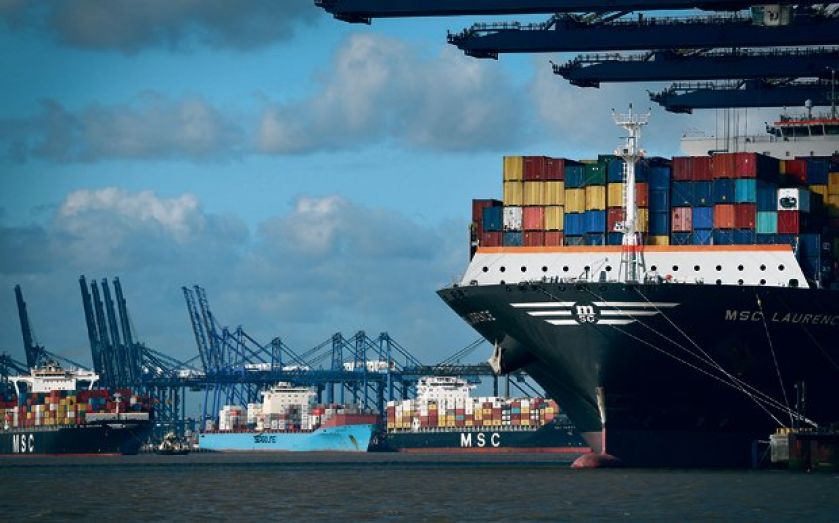Sterling’s enduring strength: Not the bad news some fear

A strong pound brings opportunities for the discerning trader
NEWS of a stronger pound is often accompanied by alarmist warnings over the consequences for the UK economy. Entrepreneur and economist John Mills has recently campaigned for a devaluation of sterling to boost British manufacturing competitiveness in the long term. And many fear that a stronger currency (the pound has gained almost 6 per cent against the dollar in six months) is holding back the rebalancing of the UK economy, potentially undermining the recovery. But while there are firms suffering from the recent rise, including some exporters and companies reliant on revenues from abroad, it’s easy to overplay the dangers.
The structure of global supply chains has radically shifted in recent decades, with a strong currency arguably having less of an effect on exports now than in the past. And the greater purchasing power will be a boon for many firms. Hurdles to the pound’s march towards $1.70 (from current levels around $1.684) may yet materialise. But if positive data prints, including today’s GDP figure, keep pushing sterling higher, traders shouldn’t see this as a catastrophe in the making.
ONWARD MARCH
“Sterling’s rise isn’t entirely inexorable, but it does still have legs,” says David Johnson of Halo Financial. As long as GDP figures don’t disappoint, and we continue to see improvements in the labour market, he says, the current trend should continue through the summer. There are potential sources of weakness, however. FxPro’s Angus Campbell points out that the huge number of investors holding long positions at the moment could cause a sharper sell-off if the rise shows signs of reversing.
And there are risks on the horizon. Morgan Stanley analysts recently highlighted the Scottish independence referendum as a potential trigger for volatility. A strong poll lead for a No vote has led many traders to pay little attention until recently. If the polls continue to narrow, markets could begin to “price in the increased uncertainty.”
TRADING THE RISE
But if sterling’s upward march does continue, how will this affect corporate Britain? Capita Asset Services released a report yesterday arguing that the pound’s strength will wipe £3.5bn off the dividends of UK companies if it endures this year. And while lower income from equities will not directly affect traders, the pound’s strength could send shares lower in some sectors.
According to Ashraf Laidi of City Index, “translation risk” (converting foreign-based revenues into pounds) could adversely affect certain firms. Companies use hedging instruments like currency swaps to mitigate this risk, but sterling’s strength this year has caught many out. Advertising group WPP, for example, last week reported a 1.5 per cent rise in revenues from a year earlier to £2.57bn, beating analysts’ forecasts. But at constant exchange rates, WPP pointed out, the increase was 9.6 per cent, with sterling’s strength knocking around 8.1 per cent off reported revenues. The group’s shares fell by around 3 per cent after the announcement.
WPP is by no means alone. Laidi says that retailers with significant operations abroad are vulnerable. In its 2013 annual report, Next estimated that a 10 per cent strengthening of the sterling-dollar rate (from December’s levels of just $1.65) would hit profits by around £3.8m this year. Luxury brand Burberry recently warned that sterling’s strength could have a “material impact” on future profits, knocking £30m off the bottom line if current levels endure.
And some UK exporters, it is argued, could suffer if the strong pound continues to make their products expensive to buy abroad. The risk is highest in the coal exporting industry, Laidi says, with the strength of sterling raised as one of the key reasons for the recent troubles at UK Coal.
MORE GOOD THAN BAD
But plenty of economists are wary of applying this argument more widely. Capital Economics’s Samuel Tombs points out that British exporters may be able to offset the impact of the pound’s rise by cutting their sterling prices. When the pound dropped in 2008, many exporters took the opportunity to increase margins by raising sterling prices by around 20 per cent. Now the pound is strong again (and margins still wide), Tombs argues that exporters have the scope to cut sterling prices slightly in order to keep their exports steady in foreign currency terms, maintaining market share. The data suggests that they have started to do this, with UK export prices in pounds falling throughout 2013, and staying steady in foreign currency terms (see chart).
And on the cost side, the globalisation of supply chains has shaken up the traditional logic of currency strength and exports. Credit Suisse publication The Financialist reports that 45 per cent of UK manufacturers got at least 80 per cent of goods in their supply chain from within the country in 1992. The figure was just 15 per cent in 2011. This means that the effect of a strong pound on export prices is partially offset by cheaper supply chain costs. Fears that a rising currency will undermine the recovery, and exacerbate apparent imbalances in the UK economy, seem overstated.
Credit Suisse’s Neville Hill, meanwhile, has argued that, by bringing down inflation and boosting consumer purchasing power, a strong pound may be a net positive for the economy. This could push some equities higher as well. Travel firms, food producers and other sectors more closely linked to domestic spending power have increased their dividends recently – often a sign of good health. Capita Asset Services found that payouts in the FTSE Travel and Leisure sector rose by 42.5 per cent in the first quarter of 2014. And Campbell observes that sterling-dollar highs of around $2 in 2007 coincided with parallel highs for the FTSE 100.
It’s not just British tourists that could benefit from the pound’s strength this summer.